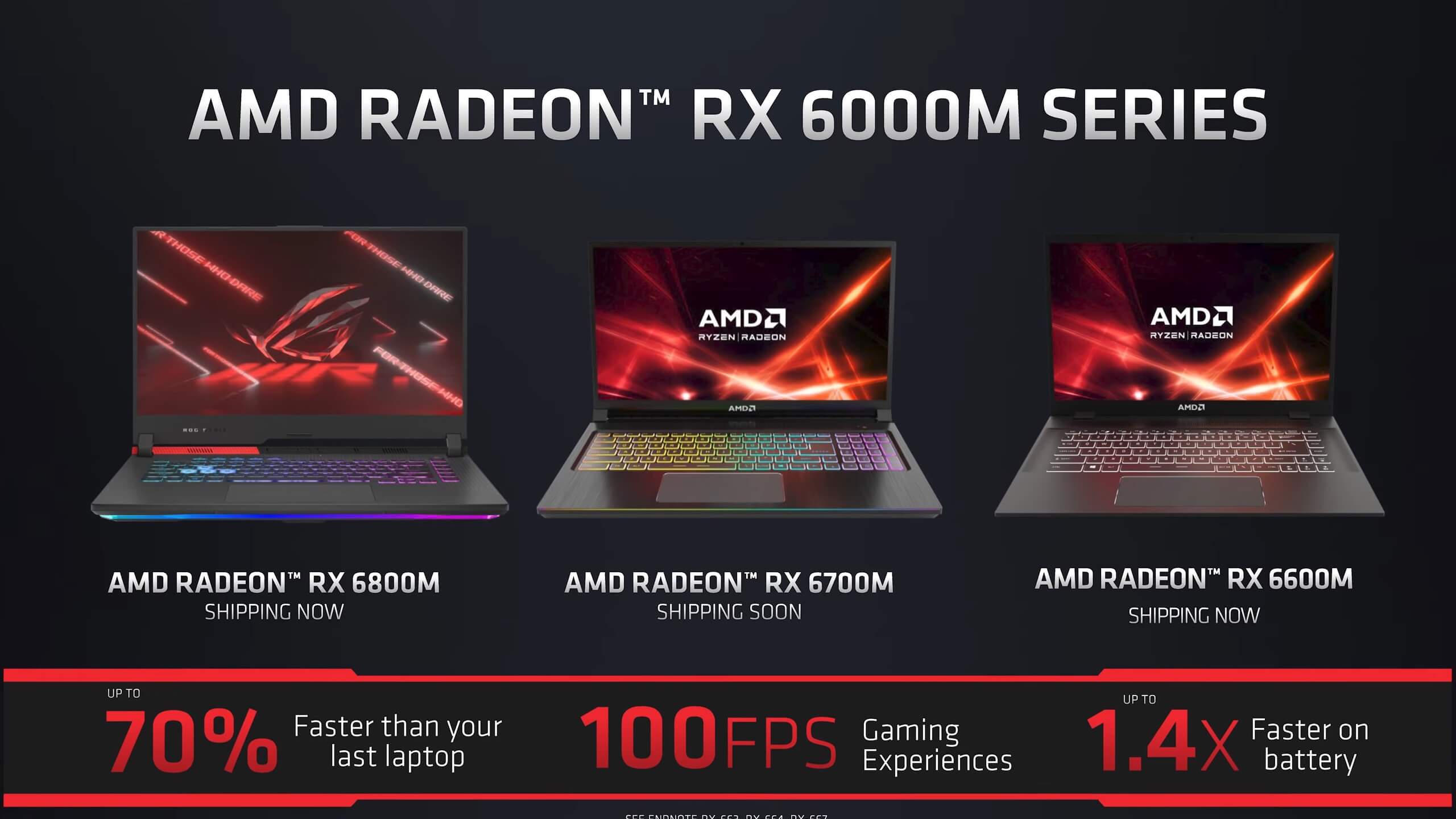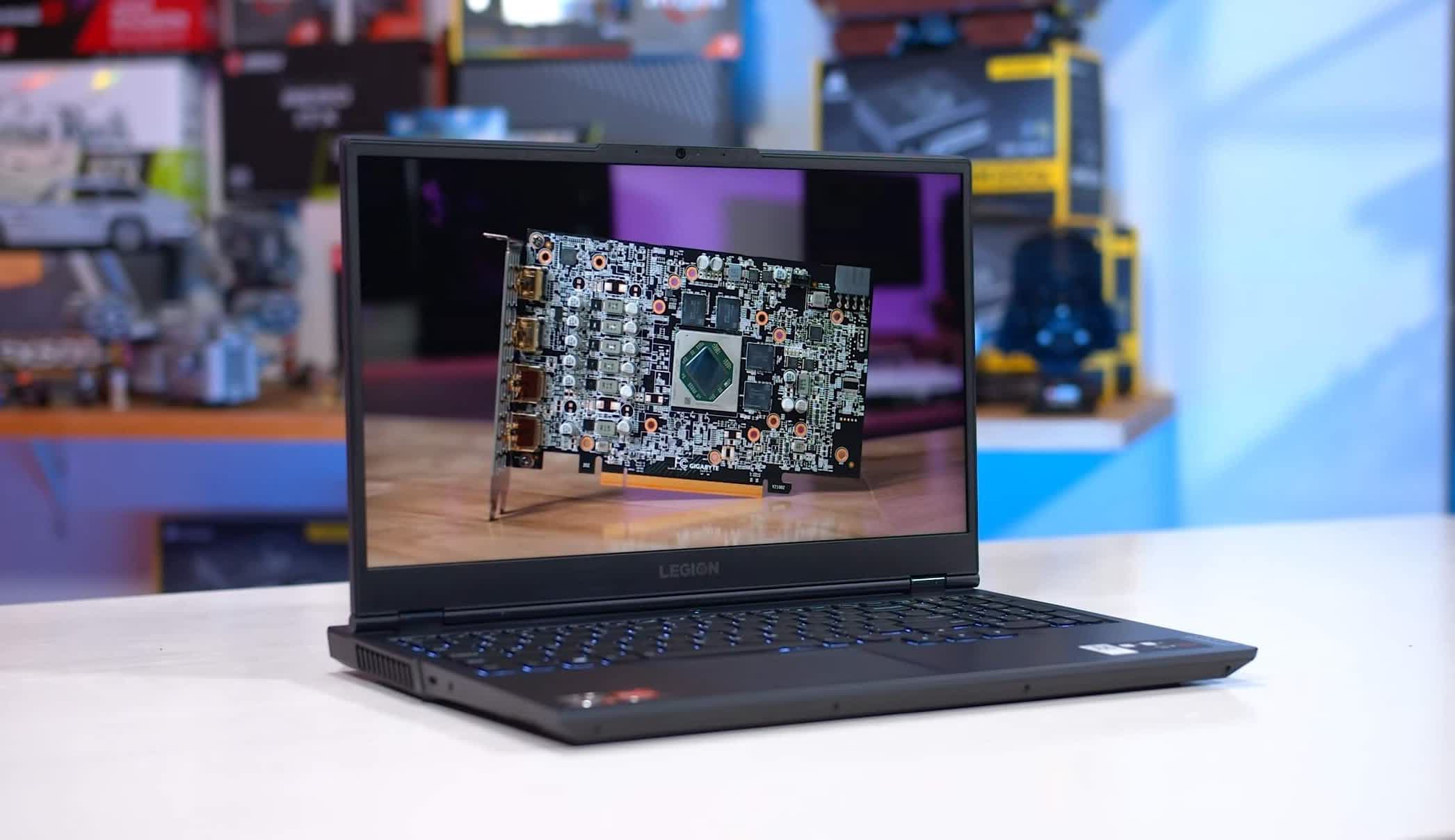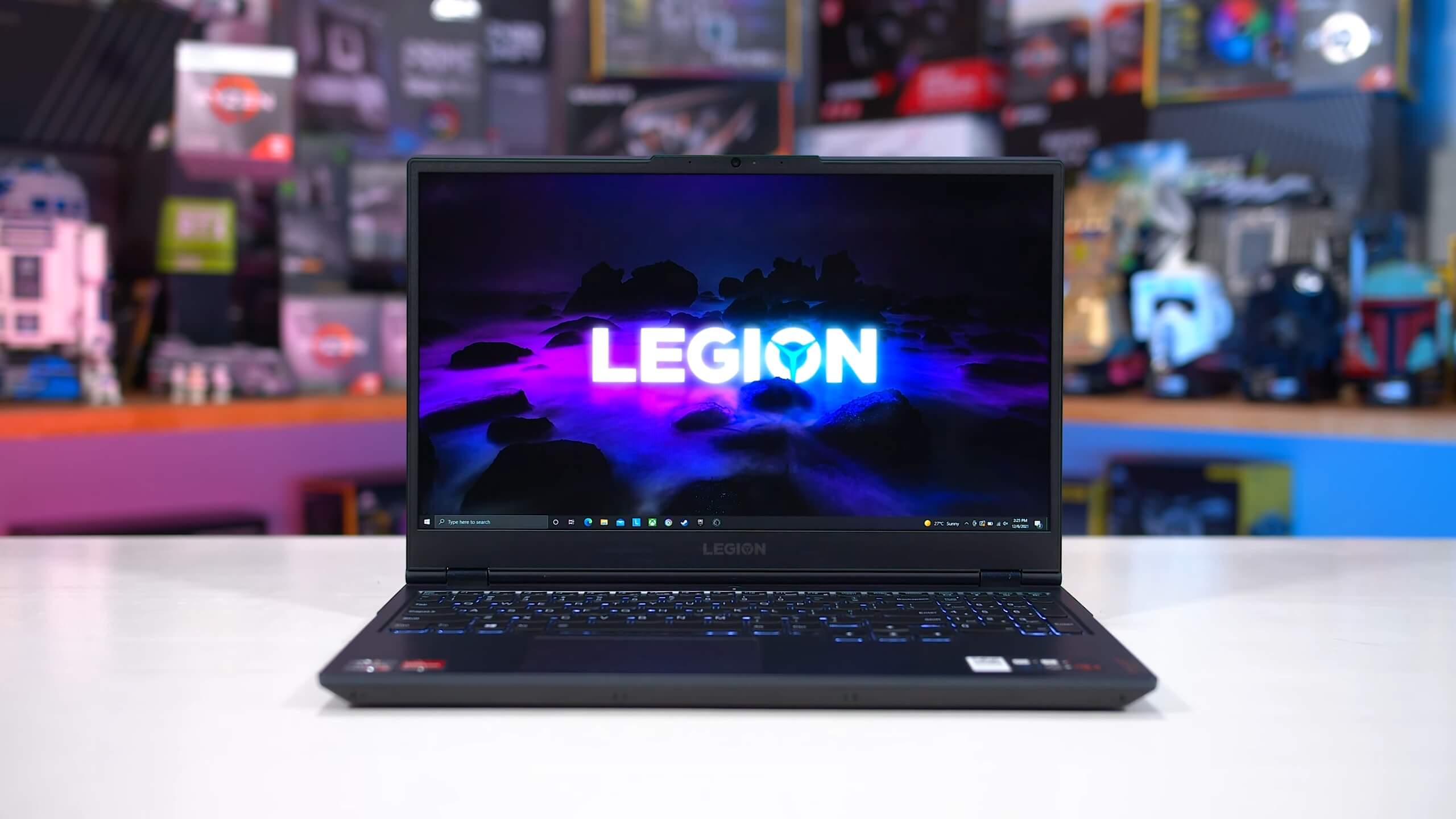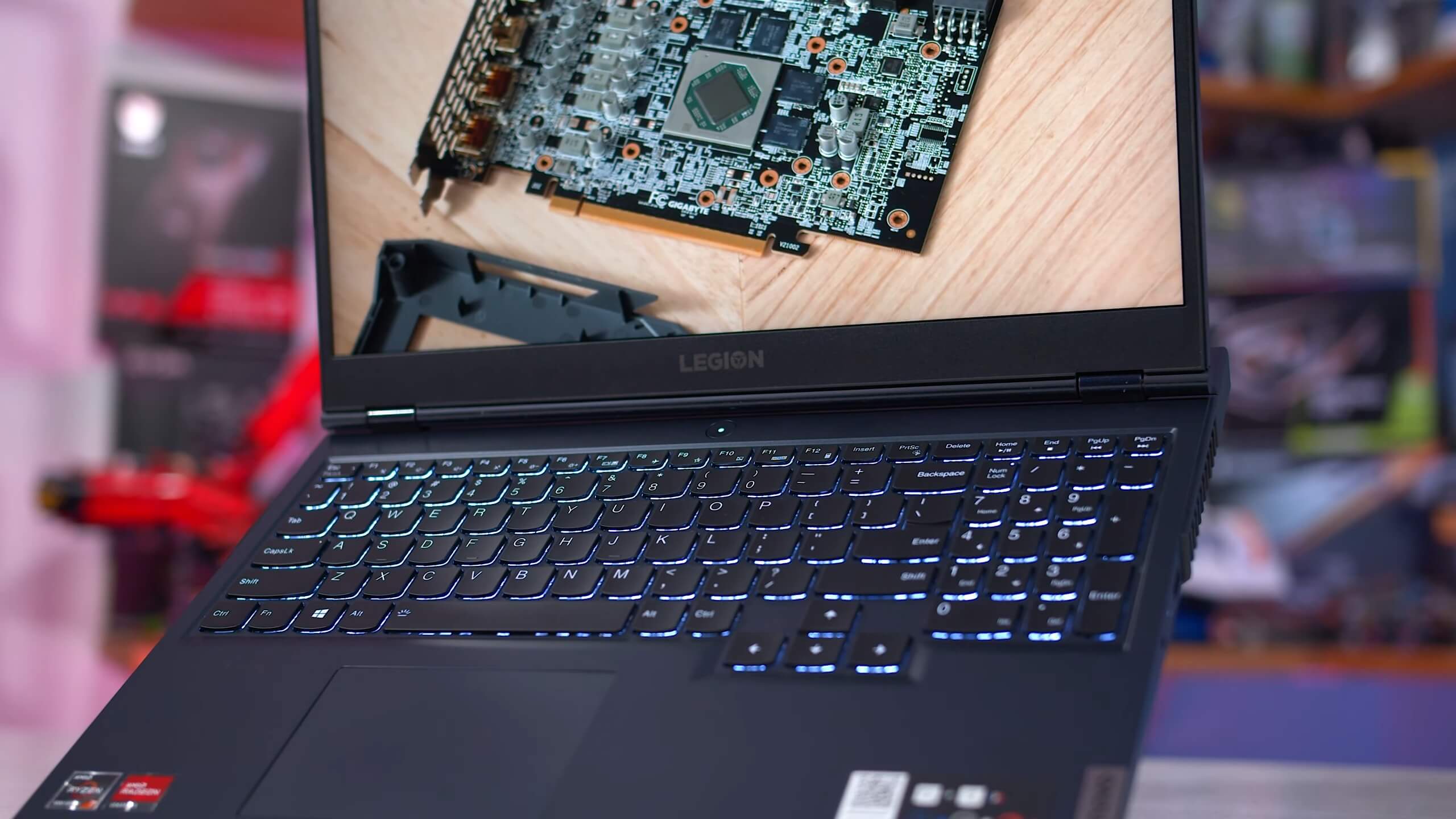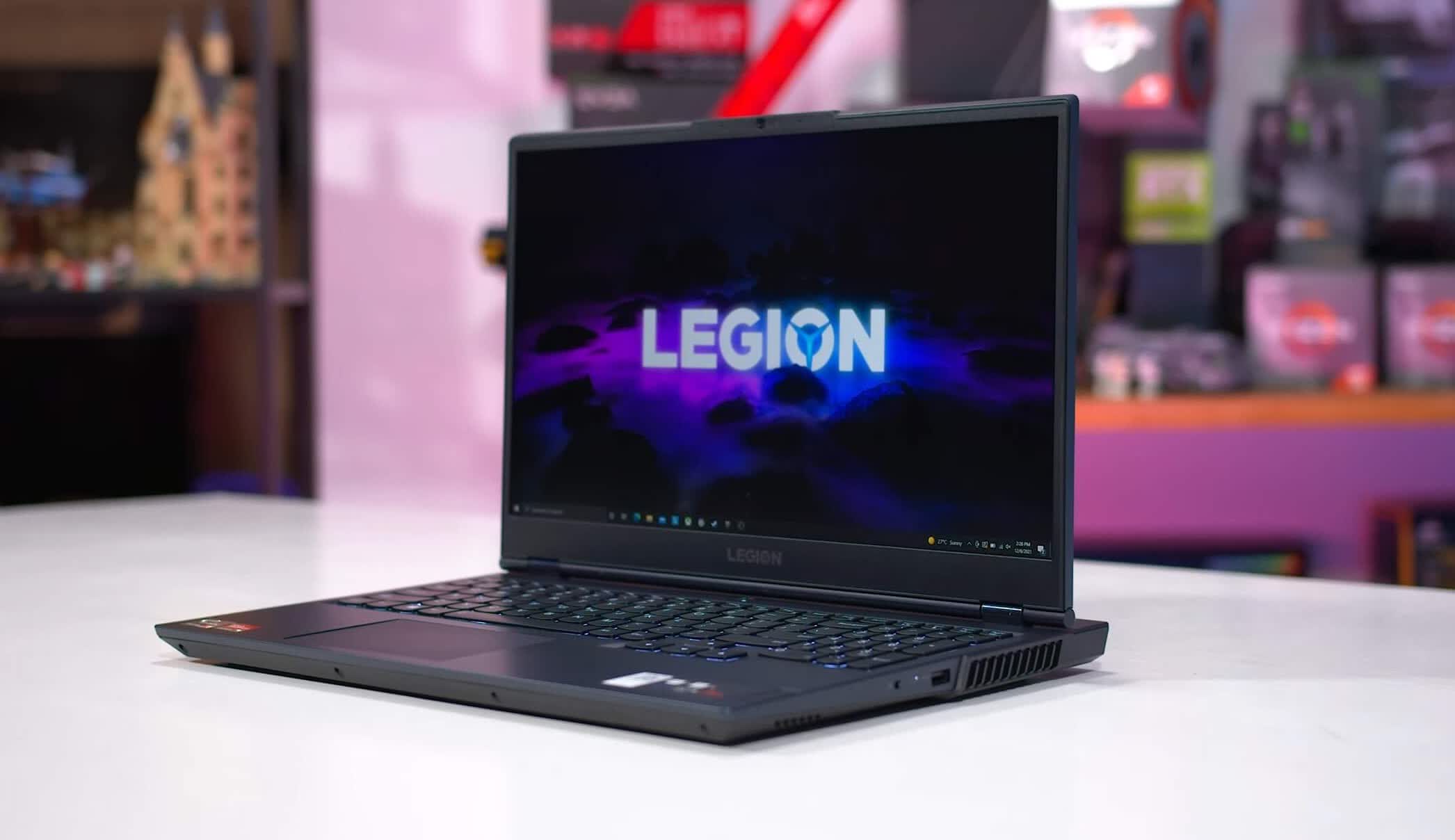Today we're finally getting around to review another of AMD's latest generation mobile GPUs, the Radeon RX 6600M. Months ago we checked out the RX 6800M, AMD's top discrete graphics option for laptop gaming, but it's been a bit harder to find the RX 6600M for us to test until now, so better late than never.
The Radeon RX 6600M is part of AMD's RX 6000 mobile series, which comprises only three GPUs: the 6800M and 6700M - which use AMD's Navi 22 die that we've also seen in the desktop RX 6700XT - and the 6600M, which uses Navi 23. It's not easy to find these GPUs on the market, especially the Navi 22 designs. As far as we're aware the 6800M is only used in the Asus ROG Strix line, and the 6700M is found in the MSI Delta, and that's about it. For the RX 6600M that we're looking at today, we've found at least a few choices from different vendors.
AMD is using the same die configuration for the 6600M as the RX 6600 on the desktop, in that we're getting 28 compute units for a total of 1792 stream processors. The full version of Navi 23 is used exclusively for the RX 6600 XT desktop GPU, so the 6600M is a cut down version. It is, however, clocked relatively high for a mobile part, with a "game clock" of 2177 MHz - that's the frequency AMD expects the GPU to run at in games at the highest power level and a little higher than the RX 6600 desktop card.
As for the memory subsystem, AMD is including 8 GB of GDDR6 running at 14 Gbps over a 128-bit bus, delivering up to 224 GB/s of memory bandwidth. There's also 32MB of Infinity Cache on the GPU itself. In the case of power requirements, AMD lists this GPU at up to 100W, although every laptop using it so far is a SmartShift design where the total power capabilities of the system are shared between the CPU and GPU. So far in practice we've seen power sit between 75 and 100W in most games, though usually in the higher part of that range.
AMD is clearly targeting Nvidia's GeForce RTX 3060 Laptop GPU with the 6600M, with both GPUs occupying the same class of systems and on occasion you can find the exact same laptop design with either AMD or Nvidia GPUs. The 6600M has a larger VRAM buffer (8GB vs 6GB), but also lacks some of the features of the RTX 3060, like DLSS and more mature ray tracing support.
The test system we are using today for this mobile GPU review is the Lenovo Legion 5. Our unit is configured with an AMD Ryzen 7 5800H processor and the RX 6600M running with SmartShift, plus 16GB of dual-channel DDR4-3200 memory. Lenovo ships this laptop with the slower variant of 8GB DIMMs you can get, so I swapped those out for the 'standard' speed DDR4 memory we've been using across every laptop we test, allowing us to make a more apples-to-apples comparison.
Throughout this review we'll be comparing the 6600M to other laptop GPUs in a general sense, so the data should apply to many different laptops that use the same GPU configuration - although make sure to check the power limits before buying.
Testing conditions: we're testing at 1080p using the internal laptop display, connected through the iGPU - this represents a standard configuration running without a mux switch. We're also testing at 1440p using an external display connected directly to the GPU, which shows us the most GPU limited environment. The benchmarks will break down 8 games in detail and then we'll look at a full 16 game breakdown at the end. On to the testing.
Benchmarks
In Metro Exodus at 1080p using ultra settings, the 6600M delivers performance between the two RTX 3060 variants we have in our charts. The 6600M at up to 100W is 13 percent faster than the RTX 3060 running at 80-95W, but 10 percent slower than the same Nvidia GPU at 115-130W, so this is roughly where you'd expect based on the power limits. AMD's power target is between these two configurations, and so is performance. However the 6600M is clearly not a lower-tier or mainstream GPU, comfortably outperforming the RTX 2060, and delivering significantly more performance than the RTX 3050 Ti Laptop GPU.

At 1440p it's more of a struggle for the 6600M. Under these conditions, the GPU is only able to match the performance of the lower-power RTX 3060 configuration, and clocks in 16 percent slower than the high-power 115-130W variant. There's still a large buffer to the RTX 3050 configurations and you still get 60 FPS on average, but 1440p isn't the strong suit of this GPU in this game.


In Red Dead Redemption 2, the 6600M struggles a little compared to the RTX 3060. In this title at 1080p, the 6600M is only able to match the lower-power RTX 3060 laptop configuration, and ends up 12 percent behind the maximum the RTX 3060 has to offer. This game really benefits from higher GPU power limits and the performance that can bring.

However at 1440p, the 6600M is able to improve its standing somewhat, now easily beating the lower-power RTX 3060 configuration, and sitting between the two variants overall. Unlike in Metro Exodus, the 6600M doesn't fall further behind the 115W model at the higher resolution, it's still 13% slower in this title.

We've just seen two games where the 6600M fails to beat the best RTX 3060 laptop configuration, but that's not always the case. In Assassin's Creed Valhalla at 1080p, the RX 6600M is almost at the level of the RTX 3070, beating the 115W RTX 3060 by 11%, and beating the 80W variant by 18 percent. This title generally performs very well on AMD GPUs and that's no different here, especially at 1080p.

At 1440p the gap does close to some extent, with all of the RTX 3060 and RX 6600M configurations delivering roughly the same level of performance. There's not much to say here other than there's no difference, though once again we do see the 6600M slip further down the table at a higher resolution which does suggest 1080p is more of a sweet spot for this GPU.

Cyberpunk 2077 is a punishing game on laptop GPUs when running using ultra settings, even at 1080p. However the 6600M does pretty well here, delivering performance 5 percent slower than the 115W RTX 3060, and 10 percent faster than the lower power variant so this is very much a mid-table, mid-range GPU that's performing as expected.

Like in other titles, 1440p isn't as strong of a result for AMD, dropping from 5 percent slower to about 10 percent slower relative to the RTX 3060 full power variant. Neither of these GPUs is sufficient for gaming using ultra settings at 1080p, for the best experience you should either drop the quality settings or in the case of the RTX 3060, use DLSS, which isn't available on the RX 6600M.

Watch Dogs Legion is a strong title for this AMD GPU configuration, delivering performance 7 percent faster than the RTX 3060 at 115W, and a decent 10 percent faster than the lower power variant. The 6600M is not at the level of the RTX 3070 yet, but it's sitting between the RTX 3060 and RTX 3070 which is a pretty decent result for what is ultimately a more mid-range GPU found in affordable gaming laptops.

And at 1440p we see one of the rare examples where the 6600M can extend its lead in average performance over the RTX 3060 115W model, however 1% low performance does remain roughly the same, so the actual experience is only slightly faster on the AMD GPU.


At 1080p in Horizon Zero Dawn, the RX 6600M ends up just 3 percent slower than the RTX 3060 full power variant, which is a pretty good result. Then at 1440p, performance isn't as good: the 6600M is able to get pretty close to the RTX 3060 variants in terms of 1% lows, however the Nvidia GPUs pull ahead in terms of average frame rates.

In Death Stranding at 1080p, the 6600M is one of the stronger performing GPUs, beating both RTX 3060 models in the chart by around 5 percent. There's still a gap to the higher performing RTX 3070 models, however the 6600M is once again showing its strength for 1080p gaming in the mid-range.

At 1440p, the RX 6600M is, like we've seen a number of times now, less impressive. At this resolution, it falls behind both RTX 3060 configurations, although the impact is mostly in terms of average frame rates, as the 1% low is still reasonably solid in this title. With that said, there is a massive gap between the 6600M and the much slower RTX 3050 Ti in this game.

The final game we're looking at today in detail is Dirt 5. Here the 6600M is 8 percent faster than the full power RTX 3060 configuration at 1080p, and a substantial 24 percent faster than the lower power 80-95W model. The 6600M is much more in the ballpark of the RTX 3070 here, sitting between the two power configurations I've tested in this chart.

At 1440p though, once again the RX 6600M isn't as good, falling between the RTX 3060 configurations in the chart. However this is a better result than some other benchmarks, where the 6600M is slower than even the 80W model of the RTX 3060; that's not the case here, as the 6600M is 6% faster than that model.
Comparison: Radeon RX 6600M vs. GeForce RTX 3060
From those 8 games we get a pretty good look at how performance stacks up, but let's take a look across the full 16 game test sample. When comparing best configuration to best configuration at their full power limits, the RX 6600M is pretty similar to the RTX 3060 115W at 1080p. There's not much separating the average result, with a couple of strong titles for AMD, a couple for Nvidia, and many with just a single digit margin. Given the 6600M is running at a lower GPU power level, that's a decent result for AMD.

The gap widens at 1080p when comparing the 6600M to the 80W variant of the RTX 3060, which can be found in some laptops. The 6600M is 12 percent faster on average, and indeed takes the lead in every single game tested. However it's also achieving this lead with a slightly higher power level.

At 1440p using an external display directly hooked up to the GPU, the weaknesses start to show with the 6600M. This GPU can't keep up with the higher power RTX 3060 variant except in a few outlier cases, such as Watch Dogs Legion. The average result puts the 6600M six percent slower than the RTX 3060 115W.


Compared to the lower-power 80W variant, it's a mixed bag. The 6600M is just a couple of percent faster on average, so these two GPUs are effectively delivering the same performance across a range of games, and that's with the 6600M consuming slightly more power. So like we saw in a number of individual titles, the 6600M isn't really designed for 1440p gaming and is more suited to the native 1080p resolution of many laptop displays.
What We Learned
Overall, the AMD Radeon RX 6600M isn't particularly surprising, as AMD is positioning it against the RTX 3060 Laptop GPU and it performs right around that mark, depending on the configuration and resolution we're looking at. There's nothing bad to report about it either, which is a neat positive compared to the last few generations of AMD laptop GPUs, but that won't make it a clear winner over Nvidia's offerings either on performance nor features.
The RX 6600M is a relatively good performer, especially at 1080p, where it goes toe to toe with the full power RTX 3060 Laptop configuration and delivers equivalent performance. The 6600M is configured to use up to 100W of power, versus 115-130W for the RTX 3060 we tested, suggesting that at 1080p AMD has the more efficient GPU design. That is a key aspect to consider in laptops that are power and thermally constrained.
However at 1440p, the 6600M falls away, so if you're looking at a laptop with a higher resolution display or plan on using an external display, the full power RTX 3060 Laptop GPU is a faster and better choice. At this resolution, the 6600M is more in the ballpark of an 80-95W RTX 3060 configuration, so the 6600M also loses its edge in efficiency.
There's also the feature advantage that Nvidia has this generation, including DLSS. While we didn't cover ray tracing in any great depth in this review, just know the RTX 3060 is faster. The DLSS vs FSR battle is evolving quickly, but as things stand right now, DLSS is the superior technology and it's supported in more games. So even though the 6600M may be similar to the RTX 3060 Laptop GPU in raw performance at times, AMD still has some work to do on the features front.
The 6600M does have more VRAM at 8GB vs 6GB on the GeForce side, so we'd expect the 6600M to age better with newer games that have higher memory requirements. Watch Dogs Legion is one title where the 6600M pulled away from the RTX 3060 at 1440p, in a reverse of the trend with most other games, and that's probably related to the extra VRAM.
In terms of pricing, there's only a couple of laptops to go on right now. On the Lenovo side, opting for a 6600M configuration of the Legion 5 will save you around $150 for an otherwise identical loadout, or a 9% price reduction, outside of sale prices. The other option is from HP, they don't have a directly comparable Nvidia machine, but generally across their Omen 15 lineup, the 6600M models are somewhat cheaper than the RTX 3060 models. It's not much to go on, but the 6600M does appear more affordable, though not "tier-below" cheap - you're still paying more than much slower RTX 3050 Ti laptops, which makes sense.
Pricing seems fair for what you're getting, but that doesn't make it easy to recommend one GPU over another. Given Nvidia's dominance of the laptop market, we think AMD could be a bit more aggressive with pricing, or performance, though its positioning is fair and the GPU offering is a solid one.

